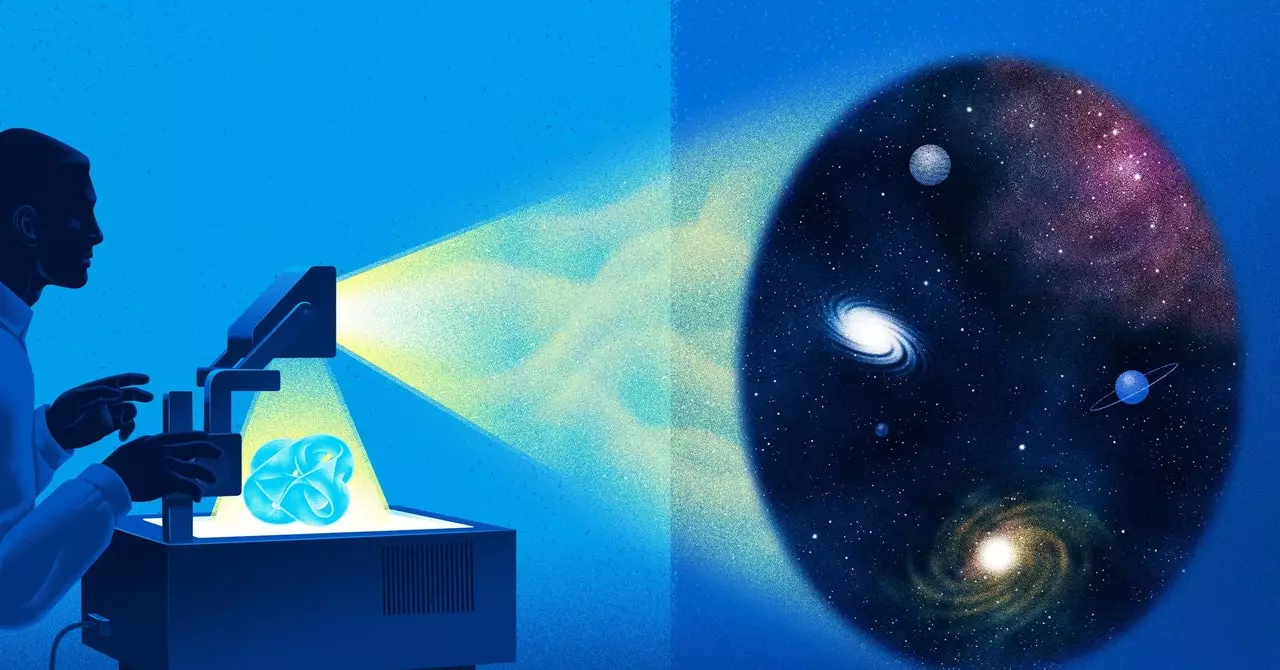The conventional methods of calculating metrics and analyzing fields within Calabi-Yau manifolds may soon become a thing of the past, thanks to the innovative approach taken by a group led by Burt Ovrut and Andre Lukas. By incorporating neural networks into the process, these researchers have been able to achieve a level of accuracy and complexity previously thought unattainable. The addition of 11 neural networks to handle different types of “sprinkles” has allowed for a more diverse array of field calculations, resulting in a more realistic representation of the complex shapes within these manifolds.
The use of machine learning algorithms in this context marks a significant breakthrough in the field of string theory. Historically, the calculations involved in determining particle masses and field arrangements within Calabi-Yau manifolds have been extremely challenging and labor-intensive. With the introduction of neural networks, physicists are now able to navigate these intricate structures with unprecedented precision and efficiency.
While the current results represent a groundbreaking achievement in the realm of string theory calculations, there are still significant challenges that lie ahead. The limitations of the neural networks in handling more complex manifolds with numerous holes have been acknowledged, prompting researchers to explore the development of more sophisticated algorithms for future studies.
The pursuit of identifying the Calabi-Yau manifolds that correspond to the particle masses observed in our universe is a daunting task that involves sifting through a vast array of possibilities. The sheer number of potential solutions within string theory presents a formidable obstacle, one that requires a strategic approach to streamline the search process. By leveraging machine learning techniques and analyzing patterns within the data, physicists hope to enhance their ability to identify viable solutions that align with observed phenomena.
Amidst the excitement surrounding the application of machine learning in string theory, there are dissenting voices that advocate for a different approach. Thomas Van Riet and his colleagues are proponents of the “swampland” research program, which focuses on identifying universal features shared by all mathematically consistent string theory solutions. By establishing a set of criteria to distinguish between viable and non-viable solutions, they aim to streamline the search for realistic models that accurately reflect the properties of our universe.
While the machine-learning approach offers a valuable tool for exploring the vast landscape of string theory solutions, it is essential to consider the underlying principles and overarching patterns that govern these complex systems. By combining the insights gained from both machine learning algorithms and theoretical frameworks, physicists can enhance their understanding of the intricate relationships between geometry, particle physics, and the fundamental forces of nature.
As the field of string theory continues to evolve, researchers are at a critical juncture in their quest to unravel the mysteries of the universe. By harnessing the power of machine learning algorithms and delving into the complexities of Calabi-Yau manifolds, physicists are poised to make significant strides towards elucidating the fundamental principles that underpin our reality. The synergy between cutting-edge computational tools and theoretical frameworks holds the promise of unlocking new insights and uncovering hidden connections that may ultimately reshape our understanding of the cosmos.
In the years to come, the exploration of string theory promises to yield not only a deeper understanding of the universe but also the potential for groundbreaking discoveries that could revolutionize the field of theoretical physics. By uniting the strengths of machine learning algorithms with the intellectual curiosity of scientists, the future of string theory appears brighter than ever before.


Leave a Reply